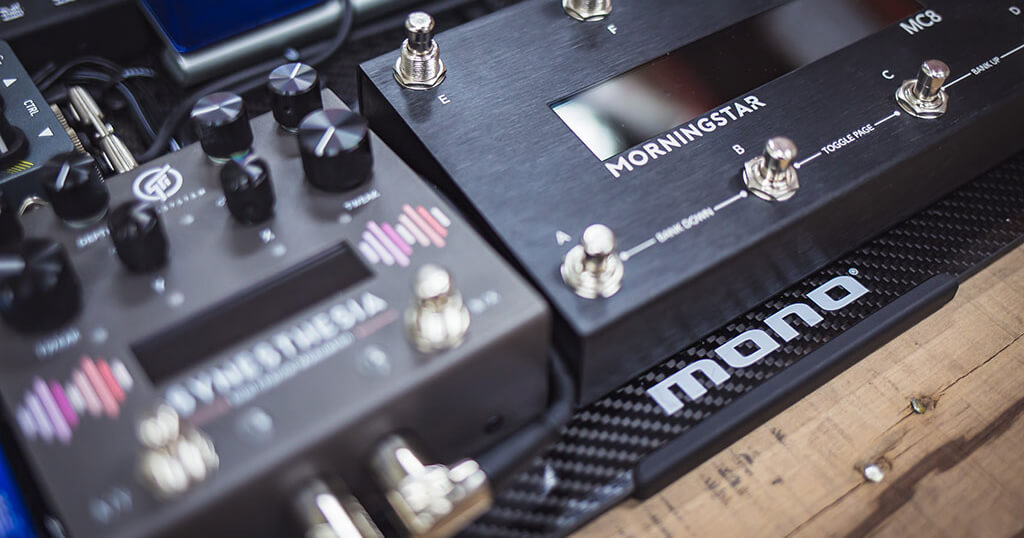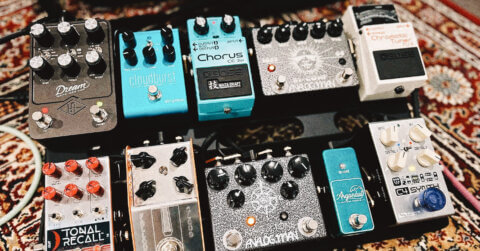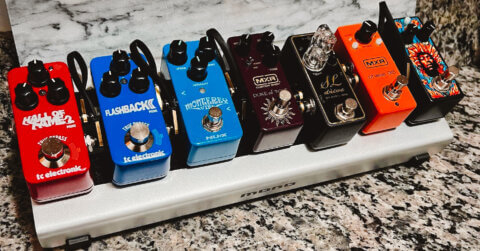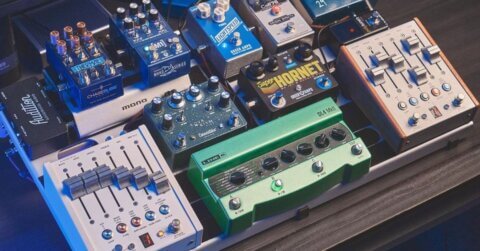Part of the joy in playing the electric guitar is assembling a pedalboard and discovering the infinite possibilities that come with it. Undeniably though, building your very first pedalboard is no easy task and it’s easy to feel overwhelmed by the sheer amount of options available online and in-store.
One common question that we receive goes something along the lines of “What type of pedalboard should I start off with: an angled board or a flat board?”.
Both styles of pedalboard provide a different user experience and at the end of the day, it all boils down to your preferences and priorities.
Read on for our take on both pedalboard variants and find out which pedal platform suits your style best.
Flat Pedalboards
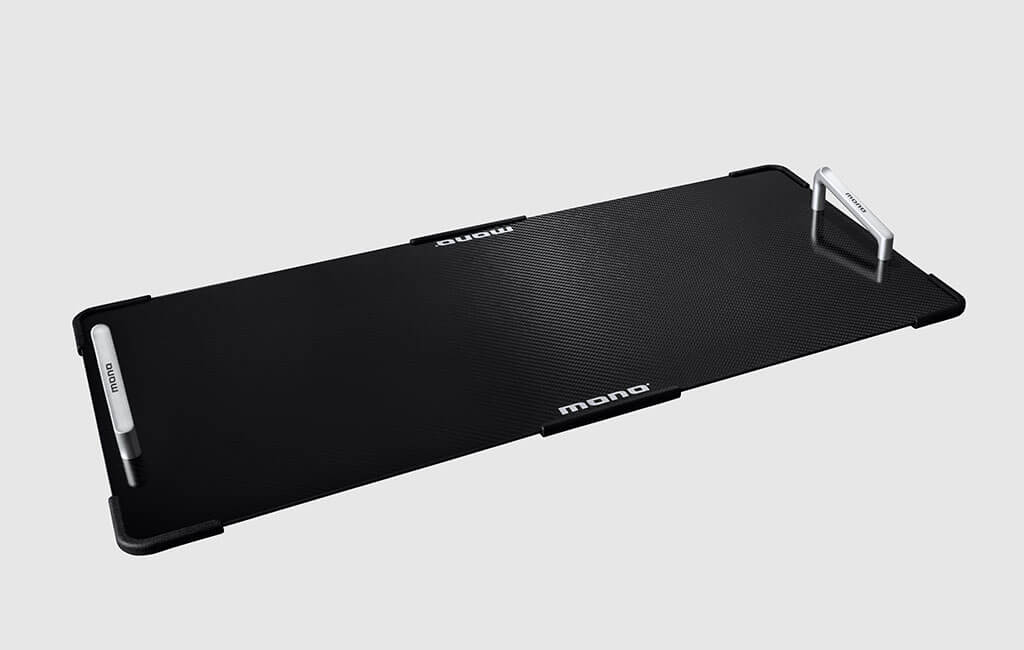
Fully flush to the ground, the flat board is the simplest pedalboard configuration out there. In fact, it’s such a classic that many of us have tried building our own DIY versions back when we first got bitten by the pedal bug.
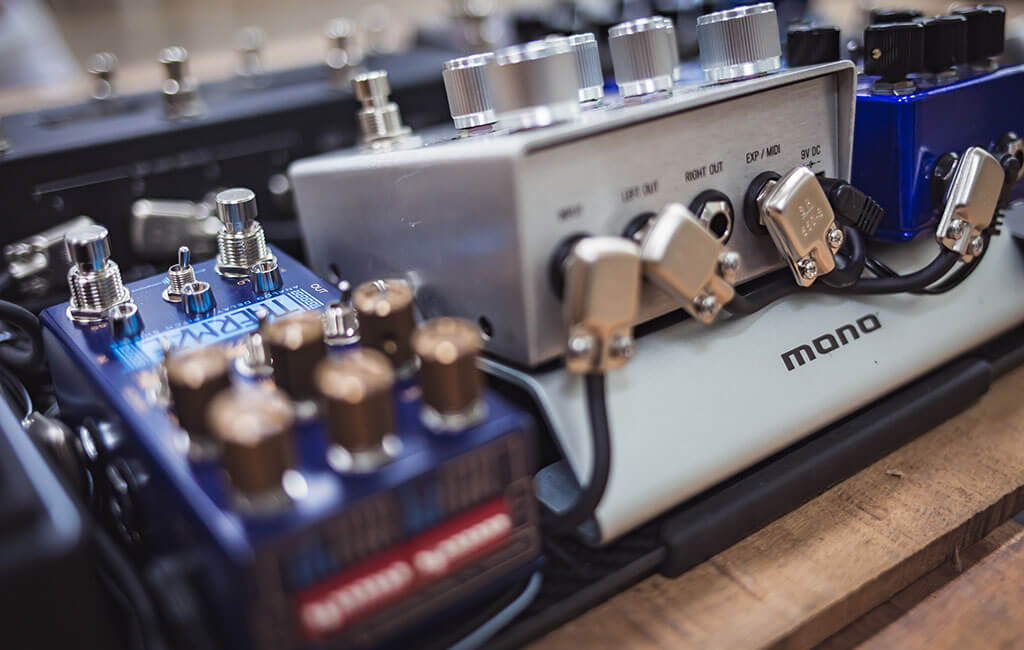
A flat board works great if your pedals are all in a single row, but can present challenges in larger setups. Without the incline of an angled pedalboard, back rows of effects can be difficult to engage with front row pedals getting in the way. Thankfully, these issues can be remedied with the help of risers (see the Pedalboard Rise and Rise+). These help to elevate hard-to-reach pedals and gives you easier access to knobs and foot switches.
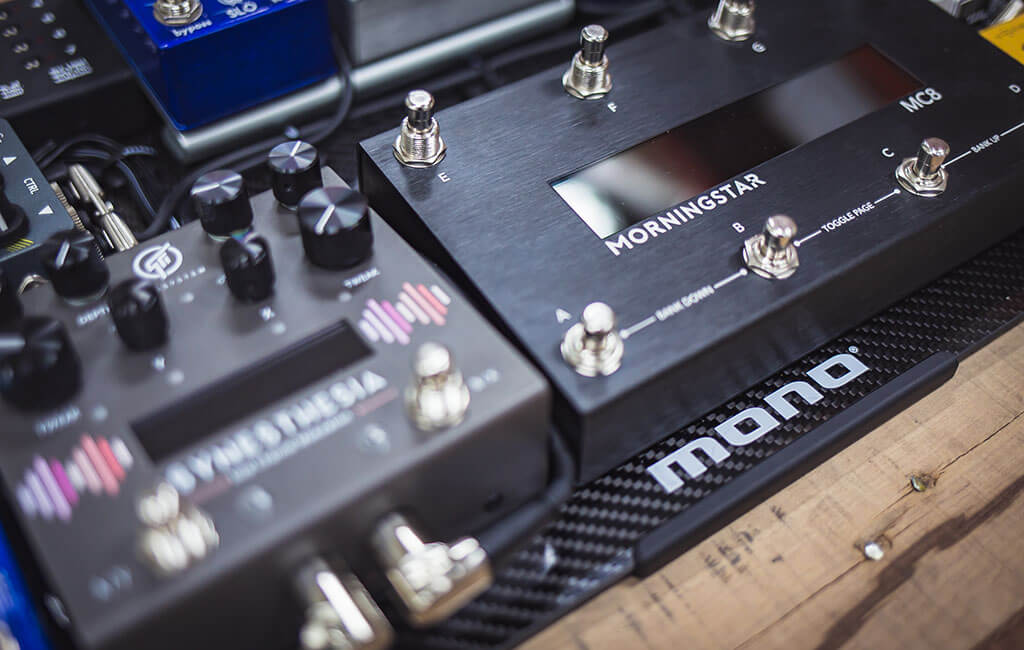
Alternatively, some tech savvy users get around the first row conundrum by integrating MIDI controllers into their rig – saving bank presets that automatically switch multiple pedals and effect parameters at a click of a button. MIDI controllers (and MIDI-capable pedals) can be costly depending on what you go for so be sure to pick one that meets your needs within your means.
Other users also point out that flat pedalboards are more ergonomic for treadle-style effects such as wahs, expression and volume pedals. These tend to feel a lot more comfortable and stable when parallel to the floor than on an incline. This is something to consider if you plan to have your foot on your board for a large proportion of the show.
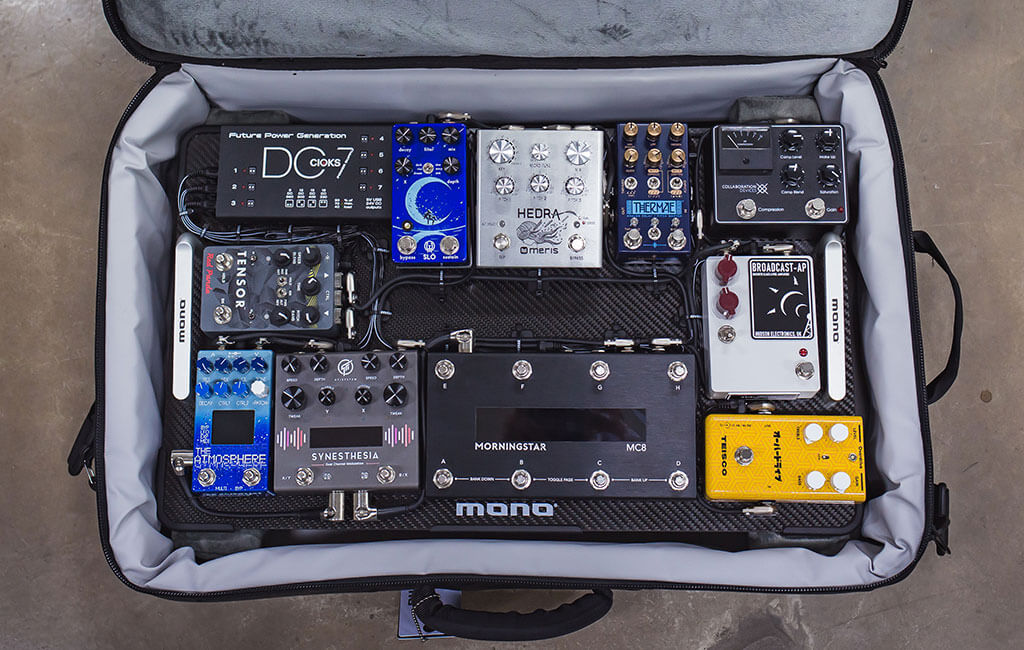
One feature unique to the flat pedalboard is building your rig with exposed topside wiring. While keeping your cables tidy on a flat pedalboard is quite a tedious process, having your cables up top gives you two things: the ability to troubleshoot on the fly and swap out pedals quickly.
Instead of having to flip your board around laboriously to undo all of your intricate wiring (as you would on an angled board), you can skip all of that work and focus on isolating the root of your problems.
This modular-friendly design also makes it one of the reasons that flat boards are so beloved by many pedal aficionados. By having your cables all on top, switching out pedals to experiment with effects becomes a whole lot easier. A huge plus for those of us with so many pedals and so little real estate.
Angled Pedalboards
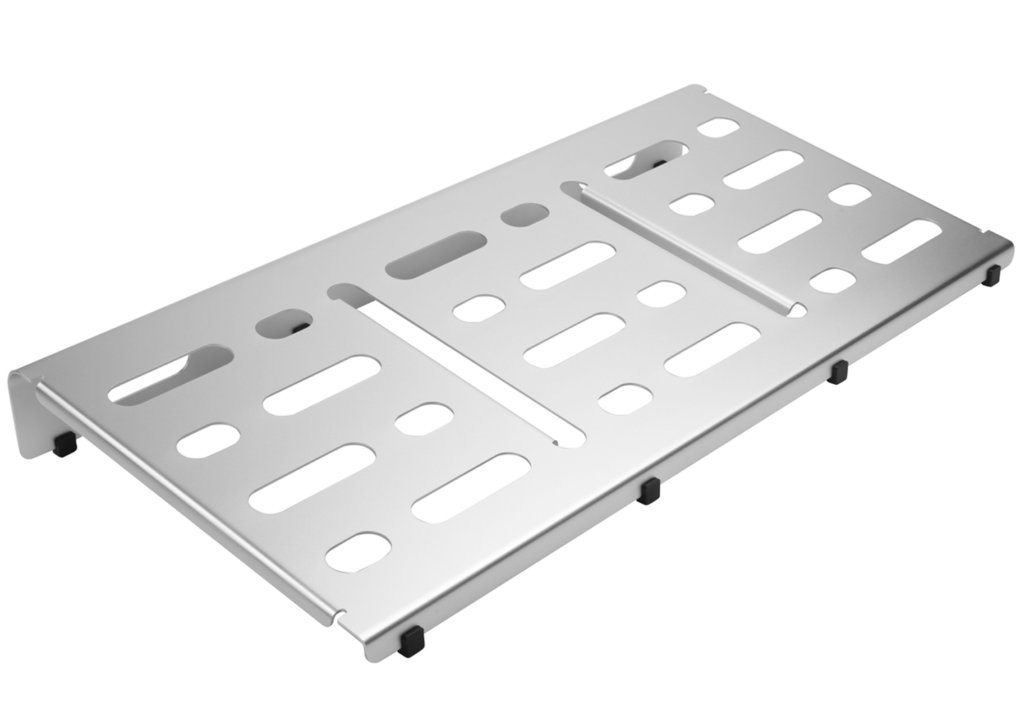
Just like its name suggests, angled pedalboards have an incline to them which causes the board to tilt towards you. Today, this is the most common style of pedalboard.
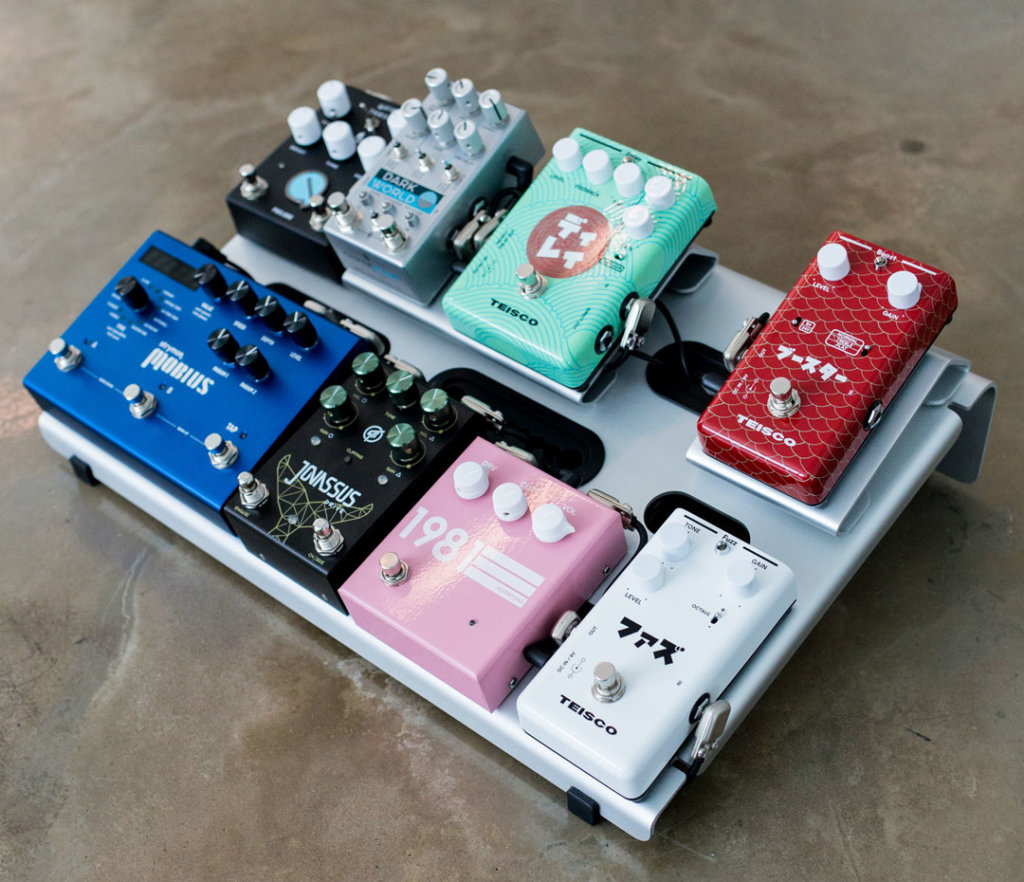
One big plus comes in the form of being able to mount your power supply unit and other utility boxes (like a patch bay or your favorite buffer) under the board – giving you extra real estate for an extra pedal or two on top. If you’re the type of person who has the compulsion to jam in as many pedals as you can, the extra real estate that angled boards provide are an absolute godsend.
This underside space also supplies ample space to hide away your cabling too. If tidiness is a must then an angled board is panacea to your problem.
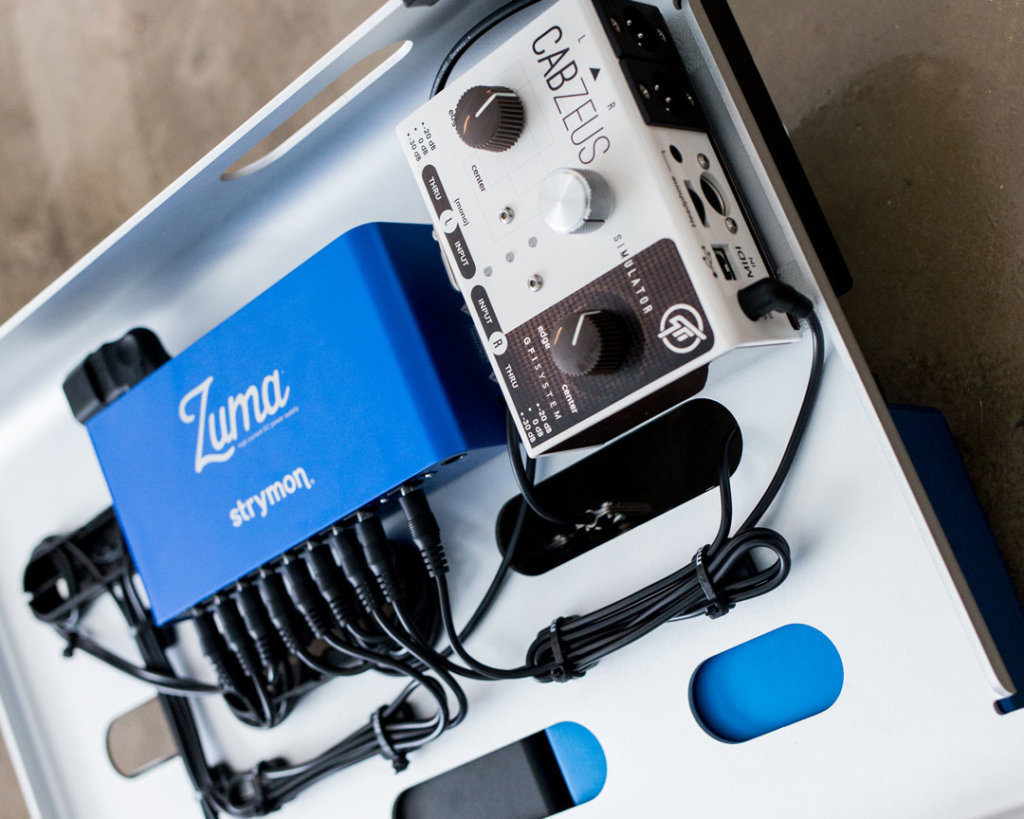
Like we’ve mentioned earlier however, pedalboards with a steep tilt may make traditional treadle-style effects like wahs challenging to use (the angle of the pedalboard can make controlling the treadle in the heel position inconvenient). If you are reliant on these type of effects, this is something to consider when you’re planning out your signal chain.
At the end of the day, like all aspects of guitar playing, picking the right pedalboard is a matter of personal preference. There isn’t one pedalboard type to rule them all so it’s always best to plan ahead, try both out and decide for yourself which suits your style best.
Looking for a pedal board to start your build or perhaps have a crack at another build? You’ll be glad to know that here at MONO we’ve got both flat boards and angled boards in our catalog – so do check them out.
